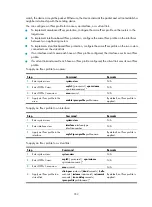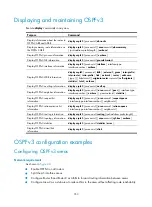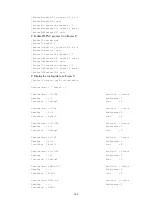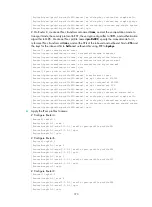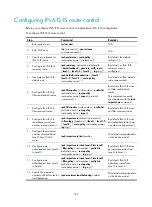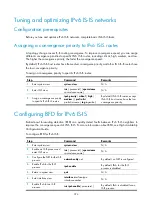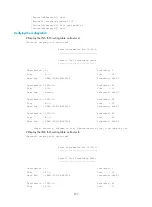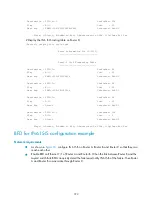
364
Configuring OSPFv3 GR
Network requirements
•
As shown in
, Router A, Router B, and Router C that reside in the same AS and the same
OSPFv3 routing domain are GR capable.
•
Router A acts as the GR restarter. Router B and Router C act as GR helpers, and synchronize their
LSDBs with Router A through out-of-band (OOB) communication of GR.
Figure 89
Network diagram
Configuration procedure
1.
Configure IPv6 addresses for interfaces. (Details not shown.)
2.
Configure basic OSPFv3:
# On Router A, enable OSPFv3 process 1, enable GR, and set the router ID to 1.1.1.1.
<RouterA> system-view
[RouterA] ospfv3 1
[RouterA-ospfv3-1] router-id 1.1.1.1
[RouterA-ospfv3-1] graceful-restart enable
[RouterA-ospfv3-1] quit
[RouterA] interface ethernet 1/1
[RouterA-Ethernet1/1] ospfv3 1 area 1
[RouterA-Ethernet1/1] quit
# On Router B, enable OSPFv3 and set the router ID to 2.2.2.2. (By default, GR helper is enabled
on a router.)
<RouterB> system-view
[RouterB] ospfv3 1
[RouterB-ospfv3-1] router-id 2.2.2.2
[RouterB-ospfv3-1] quit
[RouterB] interface ethernet 1/1
[RouterB-Ethernet1/1] ospfv3 1 area 1
[RouterB-Ethernet1/1] quit
# On Router C, enable OSPFv3 and set the router ID to 3.3.3.3. (By default, GR helper is enabled
on a router.)
<RouterC> system-view



